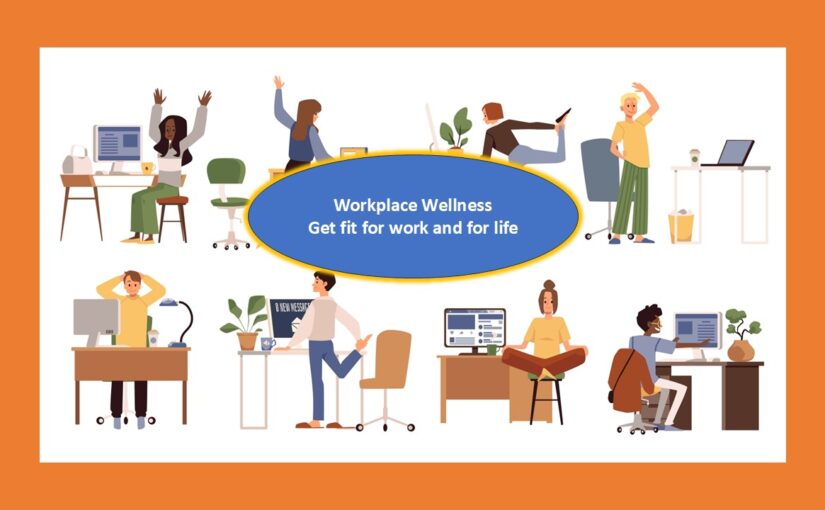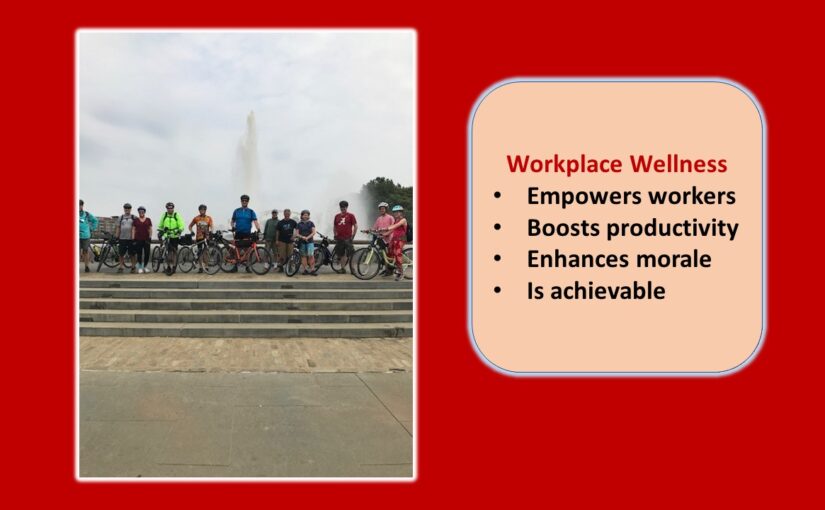By Thomas Davis, DNAP, MAE, CRNA
This article is written in mid-April when the cold winter winds are being calmed by temperate spring temperatures and the snow is being chased away by the warm rain that will awaken the trees and flowers. As the days get longer, people who vowed to “improve health” as a new year’s resolution are doubling down in preparation for summer activities. There is no better time for a leader, regardless of the profession, to introduce wellness to the balance of work-life that is essential when creating a preferred workplace.
Wellness is a win/win
Promoting employee wellness brings benefits for both the individual and the organization. Writing in the Harvard Business review, authors Berry, Mirabito, and Baun give several examples to support the benefits of employee wellness to the overall organization. Noted in their article, “A study by Towers Watson and the National Business Group on Health shows that organizations with highly effective wellness programs report significantly lower voluntary attrition than do those whose programs have low effectiveness (9% vs. 15%). According to Vicki Banks, Biltmore’s director of benefits and compensation, “Employees who participate in our wellness programs do not leave.” In addition to improved retention, other studies document the increase in productivity tied to employee wellness.
It starts with you
Personal wellness starts with you and requires commitment to both physical and mental health. Initially, wellness will be something that you do however, over time, repeated behavior becomes a habit, and wellness becomes who you are.
The University of Kansas has made a commitment to promoting wellness and work-life balance in the workplace. Organizational wellness at KU follows a three-prong approach.
- Physical wellness: The University encourages physical activity and provides employer sponsored gym memberships. In addition, healthy nutrition is promoted by supplying healthy options in vending machines. Workspace is re-designed to accommodate ergonomic flow that does not strain the body or eyes.
- Mental: Leaders are trained to be sensitive to the needs of employees and use emotional intelligence to recognize stress and impending burnout. Schedules and workflow are adjusted to support the capabilities of the employee.
- Culture: The University expects leaders to set a positive example and participate in wellness initiatives. In addition, incentives are provided for employees who participate.
Get yourself going
Alter your daily routine and incorporate physical activity three times per day. Get up a few minutes early and do a brief warmup with a 5-minute walk in your house followed by light stretching. If you have stairs in your home, you have a built-in stair master…a few trips up and down will get your heart pumping. Stairs can also be used for stair push-ups. Weather permitting, take 15 minutes to walk around the block before work.
Take your wellness commitment to the workplace and plan a brief activity during your lunch break. A brisk walk through the hallways followed by light stretching will rejuvenate your body for the afternoon work ahead. Throw in a few flights of stairs to boost the workload on your heart and legs. Take your own healthy food for lunch and avoid high carbohydrate, fatty foods.
Writing for verywellfit.com, author Ann Pizer describes workplace exercises that can be done at the desk. CRNAs are very creative and, no doubt, could adapt them to the OR workplace which include.
- Neck rolls
- Cat-cow stretch
- Seated forward bend
- Seated eagle
- Seated spine twist
- Wrist stretch
- Standing pigeon
After work, continue to be active by taking an outdoor walk or bike ride. A stop at the gym for cardio revitalize the mind after work and keep the body moving. At bedtime, plan a 15-minute cool down to include a few yoga stretches and meditation.
Get your workplace going
Build a culture of wellness in your workgroup by planning team activities that encourage your colleagues to get up and go. Having a workout buddy creates accountability and often leads to a personal friendship. Encouraging the entire group to participate in planned activities not only promotes wellness but also provides an avenue for teambuilding. In including the colleague and their family members opens opportunities for family day activities. Here are some suggestions for memorable gatherings that promote wellness.
- Walk
- Jog
- Hike
- Bike
- Tennis
- Pickleball
- Swim
- Log your step competition
Family days are fun and will
bring colleagues together outside the workplace. Plan a day at the park or beach. Find a central location that is convenient for several activities so that some could walk a paved path while others are hiking in the woods or riding bikes. Meet back in a central location for a snack/cookout and other group activities such as volleyball or cornhole.
Workplace wellness has been proven to increase morale and employee retention while reducing the number of days missed due to illness and injury. Individuals enjoy better health with a more robust lifestyle and organizations benefit from increased productivity and reduced cost of turnover. It is a true win/win for all. Be proactive and push for wellness in your workgroup.
Tom is an experienced leader, educator, author, and requested speaker. Click here for a video introduction to Tom’s talk topics.

